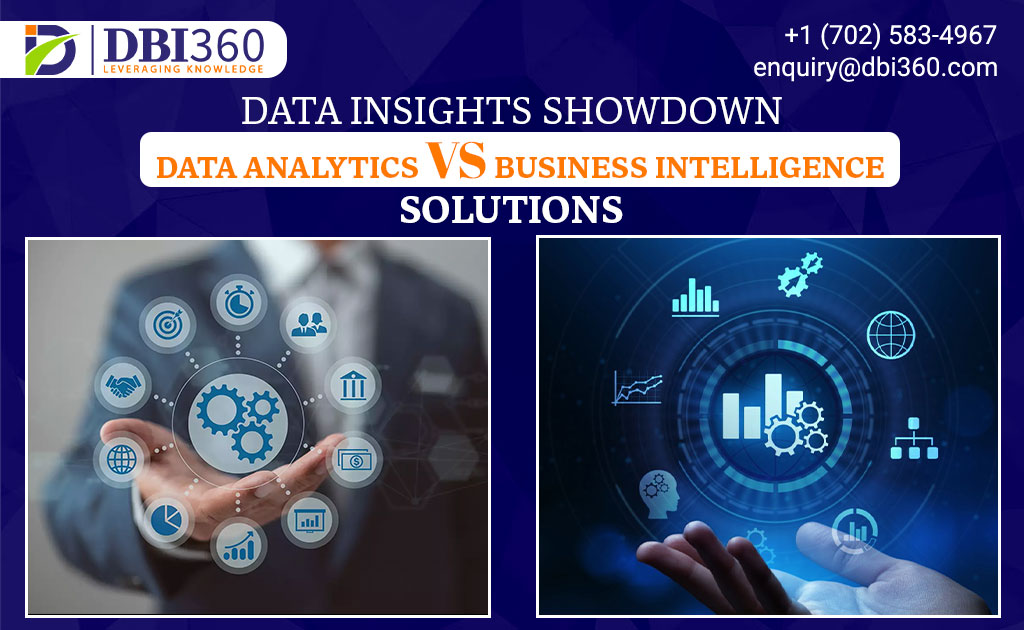In today’s data-driven world, businesses rely heavily on tools and technologies to make sense of the vast amounts of information at their disposal. Two terms that often come up in this context are “Data Analytics Solutions” and “Business Intelligence Solutions.” While they might seem similar, these two concepts serve distinct purposes in helping organizations extract insights from data.
Data Analytics Solutions: Drilling Down for Insights
Data analytics solutions focus on examining data to identify trends, patterns, and correlations. These solutions dig deep into data sets to uncover valuable insights that can inform decision-making.
Here’s a closer look at key characteristics:
-
Granular Analysis: Data analytics dives into specific data points to uncover hidden insights. It involves exploring the details within a dataset to answer specific questions.
-
Statistical Techniques: Data analytics employs various statistical techniques to analyze data. It includes descriptive analytics (summarizing data), diagnostic analytics (identifying reasons for past events), predictive analytics (forecasting future trends), and prescriptive analytics (suggesting actions).
-
Real-Time Processing: Many data analytics solutions offer real-time data processing, allowing businesses to respond swiftly to changing conditions.
-
Use Cases: Data analytics is valuable for tasks such as predictive maintenance, fraud detection, customer segmentation, and optimizing marketing campaigns.
Business Intelligence Solutions: The Bigger Picture
On the other hand, business intelligence (BI) solutions take a broader approach. They provide a comprehensive view of business operations and performance by aggregating and presenting data in dashboards, reports, and scorecards.
Here are the distinguishing features:
-
Data Aggregation: BI solutions gather data from various sources and consolidate it into a single view. This holistic perspective allows decision-makers to see the big picture.
-
Visualization: BI solutions use data visualization techniques like charts, graphs, and tables to present data in a user-friendly format. This simplifies complex data for easy comprehension.
-
Historical Reporting: Business intelligence often includes historical data, enabling organizations to assess past performance and trends.
-
Use Cases: Business intelligence is ideal for tasks like executive reporting, performance monitoring, and strategic planning.
Key Differences:
-
Scope: Data analytics delves deep into data for specific insights, while business intelligence offers a broader, high-level view of business operations.
-
Techniques: Data analytics uses statistical and predictive modeling techniques, whereas business intelligence focuses on reporting and visualization.
-
Time Sensitivity: Data analytics can provide real-time insights, whereas business intelligence tends to rely on historical data.
-
Use: Data analytics is more exploratory and investigative, while business intelligence is more about monitoring and reporting.
When to Choose Each:
-
Data Analytics Solutions: Use these when you need to explore data deeply, identify causative factors, and make data-driven decisions for specific business challenges.
-
Business Intelligence Solutions: Opt for BI when you need a comprehensive view of your organization’s performance, monitor key performance indicators (KPIs), and track progress toward strategic goals.
In conclusion
Both data analytics solutions and business intelligence solutions are invaluable tools in today’s data-centric business landscape. Understanding their differences and choosing the right one for your specific needs is key to harnessing the power of data effectively.
Whether you’re diving deep into the details or seeking an executive-level overview, these tools empower organizations to turn data into actionable insights.
So, remember, it’s not about choosing between data analytics and business intelligence; it’s about using them in tandem to drive informed decision-making and business success.

